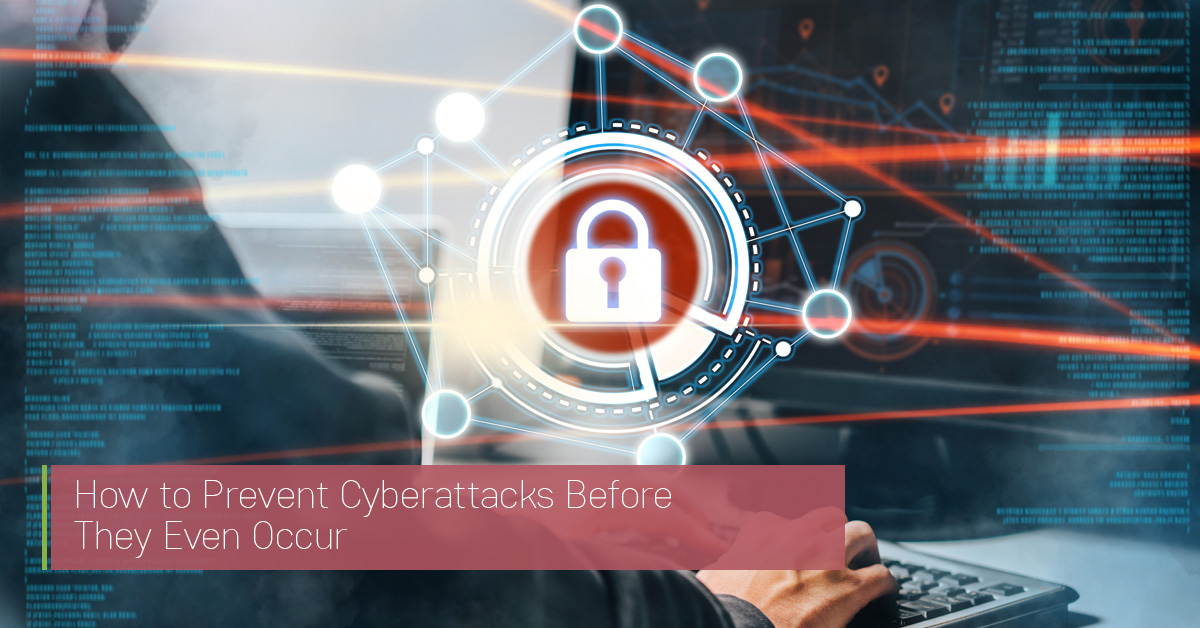Cybersecurity has become a major focus for businesses, both large and small. It’s the era of cybercrime, and companies are learning exactly how hard it is to prevent a cyberattack.
In 2019, Symantec noted that cybercriminals are becoming more ambitious and targeted in their attacks. From cryptojacking to ransomware, hackers are finding new ways to access sensitive company information for their own profit. So far, it’s working. Cyberattacks in 2018 cost an estimated $45 billion in losses worldwide.
With criminals becoming increasingly clever and tenacious, it’s more complicated than ever to prevent a cyberattack. Read on to discover what cybersecurity measures companies in the 21st century need to take, what to look for before or after a cyberattack occurs, and how managed services can help prevent cyberattacks from occurring at all.
Cybersecurity for the 21st Century
Cybersecurity looks a lot different today than it did twenty years ago. Once upon a time, it was enough to create a strong password on a router and watch network traffic from behind a firewall. Today, such measures would be woefully insufficient.
Many changes both within the office and the digital landscape have resulted in changes in cybersecurity. Notably, the modern office now has many more internet-connected devices that can be exploited for access to the network. Things like compromised employee phones, multifunction printers, and even smart devices are all subject to getting hit by a hacker.
At least 76 percent of all US-based businesses have experienced a cyberattack. Likewise, some 66 percent of SMBs shut down permanently after a successful data breach. That’s huge, and why it’s so critical to prevent a cyberattack before it occurs.
The Biggest Attack Vectors
There are many different types of cyberattacks out there, but hackers do seem to have a few favorites. In the past few years, Cisco notes that there have been two primary types of attacks dominating the cybersecurity landscape. These are:
- Ransomware. In ransomware attacks, hackers steal and encrypt sensitive data then demand a ransom for its safe return. Such attacks have been hitting municipal offices, with sometimes devastating consequences.
- Phishing. Phishing is a type of social engineering attack, where a hacker attempts to trick a user into handing over sensitive login information via a fake link. Often taking the form of emails, they mimic legitimate communications from banks or other organizations and can be incredibly challenging to spot.
The Cyber Kill Chain: The Pathway of an Attack
Kill chain is a military term that has recently entered the realm of cybersecurity. Breaking a cyber kill chain is considered a proactive form of cybersecurity where attack pathways are analyzed then systematically defended against.
According to Lockheed Martin, the mind behind the concept, the cyber kill chain contains seven distinct steps in its attack pathway.
- Reconnaissance. The harvesting of emails or sensitive information to identify a target.
- Weaponization. The identification of weaknesses or backdoors.
- Delivery. Sending to the chosen victim the link, malware, or virus.
- Exploitation. Accessing the system created by the opening.
- Installation. Inserting malware into the target system.
- Command and control. Remote manipulation.
- Actions on objectives. Acquiring the data or access desired.
To illustrate this, a phishing kill chain intended to get access to a company’s e-commerce site might look like this. First, a hacker researches who in a company is most likely to have the site login information and finds their contact information via their social media profiles. Then, they craft a counterfeit email from the hosting company, which encourages the employee to log in to review some information. That is then sent to the target.
After the employee logs in on the counterfeit site, the hacker immediately accesses the legitimate site control panel and downloads all consumer data. They leave behind a piece of code that continues to collect customer data as they make purchases. That code remains there until the breach is discovered some months later.
The cyber kill chain can be used to trace the pathway of an attack to identify how one would be most likely to occur within a company. For an office, developing cybersecurity measures to break a kill chain might include:
- Protecting contact information – especially emails – of employees.
- Identifying backdoors or weaknesses in a network, such as printers.
- Learning to identify phishing attacks or signs of unusual network activity.
- Creating procedures for how and where to log into critical services.
- Keeping antiviruses and malware software up to date.
- Improving access controls to make it harder for compromised accounts to affect systems.
- Developing more robust document security measures to protect data.
Deploy Managed Services to Prevent Cyberattacks
There are many ways to amplify the effectiveness of an overall cybersecurity strategy. No longer is cybersecurity the realm of a single department, but a responsibility for the whole organization. Managed services like print services can help a company prepare for and prevent cyberattacks. By deploying modern technology with the right configuration, a company can prevent hacking and enjoy increased productivity together.
Cartridge World Quad Cities excels in helping companies develop secure, productive environments. Contact us today to discover how we can work alongside your cybersecurity team to keep all your devices protected.
